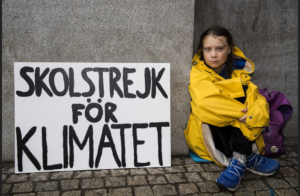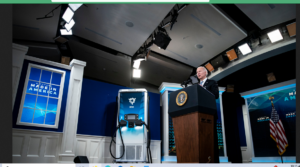Ivanka Trump strolls past the lush green golf course, blond ponytail poking through a white cap, her back to the house she and her husband bought for $24 million and renovated, probably with a low interest mortgage from the Saudi’s?. The billionaires live just like the clustered bungalow homes Brooklyn, where your next door neighbor is right next to your bathroom window and can her you flushing the toilet! But they can say they are exclusive and they are billionaires!
The overpriced homes that can be bought elsewhere for $1.5-$3.5 million, get those people with more money than brains, to shell out 20 times or more for homes that are due to be submerged with the forecast of rising seas!
Next door to Ivanka and Jared’s home is the mansion of superstar DJ David Guetta, down the street from homes owned by Tom Brady, the football superstar, Carl Icahn the takeover icon, who bankrupted Trans World Airlines, Blockbuster, Hertz and Auto Plus and Eddie Lampert who managed to bankrupt Sears Roebuck.

Moving to Indian Creek Village, you can get sympathy from other billionaires to make your losses hurt less. However, since billionaires adhere to the principle of using “other people’s money”, they suffered no losses; while their stockholders and investors did, LOL.
It’s warm and and sunny in Indian Creek Village, a town for the ultra rich on an island off the coast of Miami, a perfect winter morning in Florida’s Billionaire Bunker.

Out of sight that day was Jeff Bezos, the world’s second-richest person and the newest addition to the insulated enclave. His purchases mean the island’s five wealthiest property owners alone control fortunes totaling some $191 billion, according to the Bloomberg Billionaires Index. He still can not park his yacht there!
The exclusive paradise — accessible for those with invites via a single, heavily guarded 24/7 bridge — is ground zero for the unprecedented migration of wealth to South Florida over the past five years. It’s also a showcase for the issues cropping up throughout the region as a result — soaring home prices, one of the country’s fastest inflation rates and a growing divide that separates the elite from the hoi polloi, who increasingly struggle to afford to live there.

The island itself even has its own version of gentrification — the merely affluent are now being displaced by the fabulously wealthy able to spend $100 million for a mansion in Indian Creek, which was built almost 100 years ago for that generation’s rich.

“Florida has always been infamous for gated communities,” said Richard Florida, a serendipitously named professor at the University of Toronto’s School of Cities and an occasional Bloomberg Opinion contributor. “What is new is the massive infusion of the top 0.0001% in and around Miami.” ( Lot’s of cheap illegals as household help.)
Bezos, the 59-year-old Amazon.com Inc. founder, announced he was moving to Miami in November. Already he’s shelled out $147 million for two mansions in Indian Creek, which he’s expected to tear down and replace with custom builds. One of the houses had been in the same family since 1982, a wealthy Venezuelan dynasty that bought it for $1.4 million. The other was purchased from a Brazilian executive whose electronics company thrived in the early 1990s.
Prices for homes renovated to the standards of billionaires in Indian Creek will soon start at nine figures, according to Dina Goldentayer, a real estate broker who has been involved with three of the island’s five most recent sales.
“This is all post-Covid, and it was actually quite different before,” Goldentayer said. About seven years ago, “there would be five or six listings at the same time and $20 million was a big sale.”
Bezo’s emissaries have reached out to at least three other homeowners on the island about purchasing their properties, according to people familiar with the matter, who asked not to be identified discussing private matters. Conversations are ongoing. Maybe he is thinking of using them as rentals for extra income? The problem is that he can not park his oversize yacht close by the home.
There’s perhaps no more exclusive address in the region, though, than the 41 lots on Indian Creek Island Road, which runs along the village’s perimeter. In the middle of the island is a luxury golf course and country club; its coveted memberships are one of the few ways outsiders can get in. There are no other businesses.
The island is its own municipality, with an elected mayor, a role currently filled by Benny Klepach, the founder of duty-free retailer 3Sixty. City hall and the police station sit just across the bridge that connects Indian Creek to the community of Surfside. The town’s logo features a drawing of the iron gates that bar outsiders. Sidewalks were only added in recent years and sewage is still collected through septic tanks — though there are plans to change that.
Architect Kobi Karp, who has worked in Miami “since the Miami Vice and Scarface days,” said clients tell him that the island’s biggest draw is privacy.
“In other neighborhoods, I can come in if I want to serve you papers or harass you or take photographs of you,” said Karp, who has designed several residences in Indian Creek. “Some people don’t like that at all.”

Though Indian Creek is about the same size as Bay Harbor Islands, another oceanfront enclave of wealth in Florida, the former is home to only 84 people, while the latter has a population of almost 6,000, according to the 2020 census.
In addition to Trump and her husband Jared Kushner, Indian Creek Village property owners include short-seller Icahn, who purchased his mansion in 1997 for $7.5 million. Colombian billionaire banker Jaime Gilinski assembled five properties in the island that he’s used to create a compound for his family.
Gilinski’s decades-long buying spree is emblematic of the shifts on the island. He made his first purchase almost 30 years ago, shelling out $6 million. His latest was in 2021, for $40 million. All told, Gilinski has spent close to $80 million on his Indian Creek estates — about the same as the $79 million Bezos spent on a single, seven-bedroom mansion in October.
“Only the very wealthy, the billionaires,” can afford to live in Indian Creek now, said Paul George, the resident historian at the HistoryMiami Museum. “Hundreds of millions aren’t gonna cut it anymore.” Come on Mr. George, a person having a net worth of a few hundred million can easily afford $25-$50 million home which will sit right next to the bathroom window of an adjoining overpriced “mansion”.















 General Motors, the American industrial icon, who was the envy of its competitors for decades, has now been taken over by woke management pandering to the likes of the climate change fanatics-and right down a rabbit hole of future predictable losses and corporate destruction.
General Motors, the American industrial icon, who was the envy of its competitors for decades, has now been taken over by woke management pandering to the likes of the climate change fanatics-and right down a rabbit hole of future predictable losses and corporate destruction.

